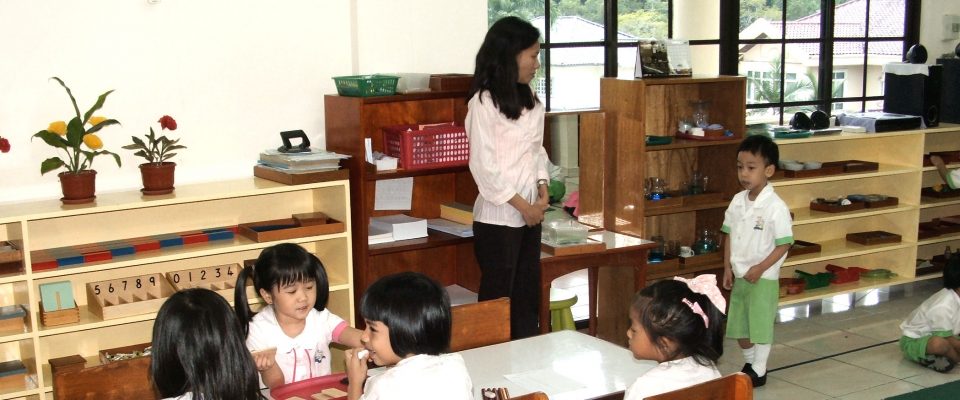“Montessori” refers to the work, research, and discoveries made by Dr. Maria Montessori, which began as experimental observation of young children in the early 1900’s in Rome, Italy. In 1907, under conditions of such observation, given freedom for self-directed activity, the children shifted their state of being from ordinary inattention and disorder to one of perfect peace, order, and spontaneous self-discipline, which brought worldwide attention to her work. In the field of education, Montessori generally refers to her use of scientific education, which was originally created by Itard and Seguin several decades before. Conventional practice of this type of scientific teaching, committed to personality or culture, however, has often come to be termed “Montessori teaching”.
Schools and educators generally use the term “Montessori” to mean observing children given freedom in an environment prepared for their self-directed activity. In outward form, it is commonly associated primarily with a set of distinctive self-teaching materials or some official “certification” or “accreditation” from an organization that claims authority in the field.
While modern conventional Montessori teaching is limited and bound to “personality” or “culture,”, the International Montessori Society (IMS) uses the term “scientific education” to refer to what Dr. Montessori was originally practicing in her first Children’s House, which brought about the child’s true nature. In fact, later research has revealed that this type of scientific education is committed to laws of nature, which is the unique “scientific” environment that allowed the child’s true nature to emerge in Dr. Montessori’s breakthrough discovery in 1907. . IMS recognizes schools and certifies teachers on the basis of this type of “true natural” scientific teaching.

